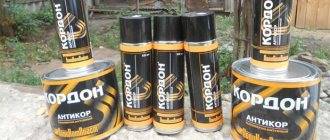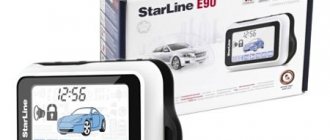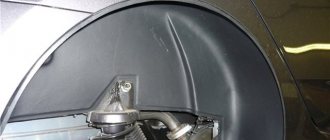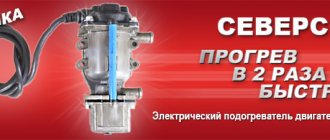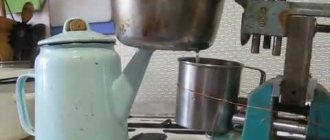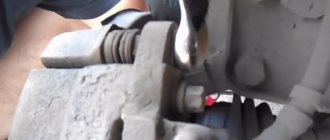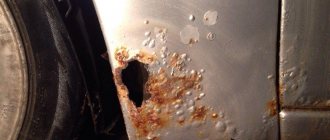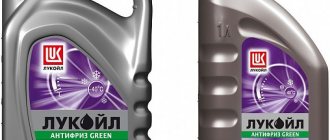What is a rust converter for cars?
Corrosion agents have a complex chemical composition. Most of them include an acid and additional components that react with iron oxide.
Corrosion products are transformed into a barrier that protects iron from oxidation.
Zinc converters have a different operating principle. The atoms of the main active substance combine with oxygen and form a film that protects the metal surface. Formulations with zinc are safer.
Acid
Often, rust removers are made based on phosphoric acid. This substance is capable of reacting with oxides, transforming them into salt crystals that are easily separated from the surface. More often, an acid solvent is used to clean the pan and car body.
If the remaining composition is not washed off in a timely manner, it will damage the iron and cause re-oxidation. Less commonly used are hydroxycarboxylic and polybasic acids, as well as tannin.
Thickeners
Thickeners are synthetic compounds that are added to rust converters to increase viscosity. Liquid does not drain from vertical surfaces, so the effect is not reduced. Thickeners do not prevent the penetration of active substances into the deep layers of the oxidized area of the metal.
Corrosion inhibitors
Zinc acts as a corrosion inhibitor. Less commonly, tannin and manganese are added to anti-oxide products. These substances form a film that protects the iron base from temperature changes, moisture and chemical reagents.
Additional Ingredients
Rust converters often include:
- flavorings;
- stabilizers;
- film formers;
- additives, etc.
Additional ingredients enhance the effect of the main components and facilitate the use of the drug.
Ratimir › Blog › A few words about the rust converter
To begin with, it’s a hell of a thing, this “Tsinkar”.
Perhaps, of all the rust converters I have tried, it is the most brutal. I'm not going to argue with anyone, everyone has their own preferences. But the Rust Stop, FENOM “Rust to Soil Converter”, HiGear “Rust Converter” and some others that I tried, which left no traces in my memory, caused an almost unambiguous reaction: “Rare crap.” Actually, they transformed something into something, of course. But after this transformation, it was necessary to clean the treated area and urgently (really urgently) cover it with soil. Otherwise, the rust would immediately appear again. After repeated attempts to cope with this disease chemically, I gave up and again, in the old fashioned way, returned to mechanical methods of struggle. To be honest, there was skepticism about “Tsinkar” from the very beginning. Despite the numerous positive reviews here on Drive. Well, what else can you come up with? Another acidic composition with zinc and manganese salts. Well, theoretically it will cope with a light coating of rust. But no. Domestic chemists managed to surprise me.
Firstly, the reaction
.
Spilled on rust, Tsinkar hisses and gurgles, biting into it. After the reaction, a sticky, thick black film remains on rusty areas and a matte gray surface on healthy metal. Durability.
Due to its stickiness, the film lasts well for at least a week (I didn’t have the nerves to watch for longer).
But at the same time, it is washed off with soap and water without any problems. Penetration depth.
Approximately 0.5 mm. More rusty surfaces must be cleaned first.
As an example, I will give a set of tools left in Lady in June of this year in Lithuania. When I came to pick up the car in November, all the bits, pliers and keys were covered with a thick layer of red, loose rust.
To check “Tsinkar”, pour a thick layer over the affected instruments and leave for 1 hour. We get these slimy pieces of metal
We wash it under running water and soap and see a completely different picture.
Where there is a surface layer of rust, under the black film there is quite galvanized metal. But where the rust has eaten deeper, we see it under the film. That is, you should not rely on chemistry alone. No matter how beautiful “Tsinkar” is, it will not heal deeply affected areas. However, the rating is "Excellent". So far nothing better has been found. Please do not consider this post an advertisement; what I see is what I write about.
Comments 21
How does Tsinkar affect a car’s paintwork? Do I need to wash it off after using it on the body?
Like any acid. The varnish becomes cloudy and becomes covered with microcracks. Be sure to wash it off. It’s better to protect the paintwork before use
I bought a converter based on orthophosphoric acid with zinc phosphate, the instructions say that you don’t need to wash it off after applying it, that it supposedly forms a protective layer! But others write that you definitely need to wash it off! Who to believe?
Quote: “Where there is a surface layer of rust, under the black film there is quite galvanized metal.” It turns out that you have already learned how to do without galvanization?! Why, this is a NOBEL PRIZE!
All these remedies, especially zincari, are complete crap. The only thing that really works and protects well (if used correctly according to the instructions) is permatex rust treatment. This product has been tried and tested for over 10 years. And as for the zinc, after treatment, the area needs to be washed with water, and this is already a greasy, greasy mess.
There was no zinc, I bought Fenom, it’s some kind of shit: I put a piece of rust in the lid, but there is no reaction at all. Tsinkar is much cheaper and works!
Criterias of choice
To choose a good converter, you need to pay attention to the following parameters:
- compound;
- toxicity;
- release form;
- consistency.
Before you buy the drug, you need to evaluate the amount of work. This will help determine the required amount of product.
Main substance
Before purchasing a rust remover, you need to carefully study its composition. Products based on concentrated acids are used for extensive damage, because... these substances are able to penetrate into deep layers. They allow you to quickly remove oxidized plaque. Zinc-based compounds have a milder effect. After their application, it takes a longer time to eliminate the oxides. Then a protective film is formed.
Release forms and consistency
Anti-rust agents are produced in the form of liquids of varying degrees of viscosity, as well as in the form of aerosols. Converters characterized by increased fluidity are well suited for processing horizontal surfaces. Viscous gel-like compositions are convenient to use for vertically located parts. The spray is used to treat hard-to-reach places.
Volume
It is extremely important to correctly estimate the amount of work in order to calculate the required number of converters. Many manufacturers produce anti-rust products in small packages. They are convenient for treating small lesions that have undergone oxidation. If you need to restore a large surface, it is better to purchase the cleaner in a container whose volume exceeds 0.5 liters. Converters that differ in chemical composition cannot be used simultaneously.
Toxicity
All products used to eliminate oxides are toxic. When working with them, you must follow safety precautions. Most formulations need to be washed off. This procedure should not be ignored, because... contact with excess drug will cause poisoning or chemical burns.
Definition and Application
Rust converters are chemical substances that serve to convert a layer of corrosion into various inactive salts and other substances, depending on the composition of the material, through a reduction reaction.
The substances in question are suitable for treating rust on wheel arches, sills, doors, welded joints and other elements of the car body. However, it is not advisable to treat external surfaces with them.
Corrosion converters can be used on low carbon and alloy steel. It should be taken into account that the effectiveness of such products is determined by the thickness of the corrosion layer. So, if the value of this value is more than 100 microns (0.1 mm), the effectiveness of rust converters is significantly reduced.
The best rust converters for cars
Some car rust neutralizers have been repeatedly tested for effectiveness by professionals and are popular with buyers. To choose the best converter, it is advisable to familiarize yourself with the characteristics of the drugs included in the top. Below are the compositions of Russian and foreign manufacturers that have a high rating.
Kudo
The structural modifier, which reacts with oxides, does not affect the paintwork.
The product converts the oxidized layer into a protective film that inhibits the spread of corrosion.
This restorer can remove minor scratches. It is suitable for treating only small damaged areas, because... Available in small packages with a volume of 0.14 ml.
Runway
This is an effective converter that can remove even deep rust. However, it can only be used at air temperatures above +5°C. The created film requires additional sanding for further application of the finishing coating. The advantages of this product include the ability to use it to remove oxides from most types of alloys.
Hi-Gear
Hi-Gear NO-RUST is available in spray form of 255 ml and 368 ml. This automotive rust converter has a high concentration of active substance and is suitable even for metal that is heavily damaged by corrosion.
One package is enough for a small area, but it is possible to treat hard-to-reach places.
A dense, hard crust forms at the site of corrosion, which can be painted without prior sanding. It is necessary to work with this drug with caution, because inhalation of the aerosol can cause a chemical burn to the respiratory system.
ASTROhim
The drug is cheap, but high quality. The product includes several active components at once. It effectively copes even with severe rust. The composition is applied to a previously cleaned surface. This leads to the rejection of oxides. After removing salt crystals with a special cloth, a protective phosphate film is formed. ASTROhim is used for surface treatment before painting. The product will protect the surface from corrosion in the future.
MROChem
The MROChem converter is often used at service stations, where work is often carried out to remove rust from the metal surfaces of the car. This product is packaged in large plastic canisters of 4.5 liters. First, a reaction activator begins to act, penetrating into the deep layers of the damaged area, binding oxides. Then, when the composition comes into contact with oxygen, a durable polymer coating is formed.
Plastikote
This is a multi-component product that can transform even deep rust into a hard coating. No bubbles or foam are formed during operation. The product is considered non-toxic, so it can be safely used even when repairing a car yourself.
Phenom
The product converts iron oxides into soil. Exfoliated crystals must be removed. When in contact with oxygen, this composition forms a dense polymer film. Tests have shown that no traces of oxidation appear on the purified metal for at least 5 years. Fenom is used to prepare a damaged area for painting. The composition is packaged in 11 ml bottles. This complicates its use when it is necessary to treat large areas of the body affected by corrosion.
Omega
This is the best Russian-made acid-based converter. It has a paste-like consistency. The composition is capable of removing rust up to 2 mm deep. It is easily applied with a spatula or a stiff brush. Its remains are removed with rags. If necessary, the procedure should be repeated to obtain the desired result of cleaning the surface. Omega is toxic and can corrode skin, so it is extremely important to take precautions when working with it.
Autoprofi
A liquid preparation produced in 0.5 liter containers equipped with a spray bottle. One package is enough to treat large oxidized areas. The product effectively copes not only with surface rust, but also with deep defects.
LIQUI MOLY
The LIQUI MOLY converter provides deep surface cleaning, but at the same time acts gently and does not damage unoxidized metal. The drug begins to act immediately after application. LIQUI MOLY active components do not react with paint. Only oxidized areas are affected.
ABRO
ABRO RC-1000 is a converter that can quickly modify rust. When using this product, a strong, dense crust is formed on the surface, resistant to water and oxygen. It protects the metal from under-film corrosion. The coating improves adhesion. The composition should not be washed off. After hardening, the surface can be painted.
Chemist
The multicomponent solution is capable of quickly converting steel oxides into phosphates. This helps eliminate even deep rust and form a durable protective film on the damaged area.
The drug contains zinc, which enhances the positive effect and increases the adhesion of the base.
The paintwork adheres well to the surface treated by Khimik.
AdCoat
The multifunctional product is water based. It gently converts rust into magnetite and blocks the flow of air and moisture to the damaged area. This protects the metal from corrosion again. The surface is smooth and can be used without sanding as a base for paint. No additional soil is needed.
TotalBoat
TotalBoat Rust Primer is the best converter made with phosphoric acid. It can be used to process not only cars, but also bicycles, trailers, oxidized components, bolts, etc. The composition effectively copes even with deep rust, but at the same time acts quickly. Under the influence of acid, oxides easily peel off from the unoxidized metal base. The converter is available in containers ranging from 0.5 to 4 liters.
Armasil
The multicomponent composition is used not only for removing rust on cars, but also in the construction of reinforced concrete structures, repair and restoration work in various industries.
The transformation of oxides occurs in a neutral environment, so subsequent rinsing of the product is not required.
The surface treated with Armasil is further resistant to corrosion processes. After removing the oxides, painting can be done immediately.
AVS
The zinc-containing converter is effective for eliminating small oxidized areas on car parts. A weather-resistant film is formed on the treated surfaces. It is often used to prevent oxidation of recently formed chips and cracks.
Poliform red
This converter has a multi-component composition and removes oxides from chromium, aluminum, cast iron and nickel. It also combats chalk and old bluing. The product creates a passivated layer on the surface. After using it, the remaining composition must be washed off. After this, the treated area can be painted.
Eltrans
The drug is able to cope with a layer of rust, the thickness of which does not exceed 80 microns. The reaction proceeds quickly and no rinsing is required. This composition is used at temperatures above +10 °C. To improve the result, the corroded surface should be thoroughly cleaned.
Permatex
The product provides one-step metal cleaning. It removes rust well and forms a durable rubber-latex coating. The treated surface does not need to be sanded further. The composition prevents re-oxidation. It is recommended to be used at temperatures between +10 °C and +32 °C. This product is not recommended for use on vehicle exterior surfaces.
SONAX
The converter does not contain acids, so it does not affect rubber elements and paintwork. At the same time, it contains toxic substances and silver, so you need to use personal protective equipment. A polymer crust forms at the site of damage.
Yashim
The drug contains an aqueous solution of several acids and auxiliary components. It is able to remove a thick layer of rust, penetrating into cracks and pores of the metal. Dries quickly. The product has a liquid consistency, so it can be easily applied to surfaces with a brush.
Start
The acid converter removes oxides and starts the phosphating process. After applying the composition, a durable film is formed on the surface. It protects the metal from the re-formation of corrosion.
Loctite
The drug is made on the basis of synthetic latex. It reacts with oxides, transforming them into black soil. The resulting coating is smooth. To increase the effectiveness of the product, it is recommended to thoroughly clean the surface of old decorative coating and flake rust. It is better to apply the composition in 2 layers with an interval of 1-2 hours. Work can be carried out at temperatures from +10 °C to +30 °C. It is recommended to paint the surface no earlier than 72 hours after treatment.
Neomid
Concentrated product removes oxides from any surfaces. The film formed as a result of its use ensures adhesion of the metal base to the paint and varnish material. Before starting treatment, you need to thoroughly clean the oxidized area. After applying the composition, you should wait 30 minutes and then wash off the residue.
Wurth
The German-made converter, which does not contain resins, acids or silicones, begins to act immediately after application. Rust removal occurs in a neutral environment. The composition does not damage the paintwork and rubber parts if it accidentally gets on them. But a film does not form on the surface. It is advisable to paint the cleaned area within 72 hours.
Laurel
The converter includes organic acids. It can be used to remove oxides from large surfaces. To improve the result, it is recommended to apply the product several times. The consistency of the composition is liquid, so there are difficulties in applying it to vertical surfaces.
Chainmail
It is low toxic, because it contains zinc and special additives, and there are no caustic acids. This makes it easier to treat damaged areas. The composition has high penetrating ability and quickly eliminates oxidized areas. After treatment there is no need to rinse off any remaining drug.
Tsinkar
Contains acid and is suitable for processing all types of metals. A protective layer of oxide is formed on the surface. The product is highly toxic, so it should be used with extreme caution. Reapplication may be necessary to remove deep-seated rust.
Phenom rust converter into primer reviews
My 11-year-old car has recently begun to actively become covered with “saffron milk caps,” so I’ve slowly started to get the paintwork in order. Large areas with rust were successfully treated with an acid primer and painted, but for small chips and pinpoint rust damage, something else was required, at least for temporary preservation.
I heard a lot about rust-to-primer converters, which form a stable protective film, so I decided to try it and purchased the most inexpensive of them, the Fenom brand.
A small 100 ml bottle containing a translucent milky aqueous solution inside. Since the bubble lay on its side for a long time, some kind of white precipitate fell out, perhaps it was zinc oxide or metal powder - a corrosion inhibitor.
Therefore, before use, shake well so that it dissolves in the liquid. I treated a couple of places on the door and doorway with a cotton swab, applied 2 layers as recommended in the instructions, visually there was no noticeable reaction with rust.
It took a long time to dry because it is an aqueous solution. Externally, the corrosion points have not changed at all.
To dispel doubts, I decided to conduct a small experiment and took a piece of rusty tin, cut out 2 identical plates from it, cleaned it of loose rust, and marked small squares on them. I left one plate as a standard without applying anything to the surface, and processed the second plate with a converter in 2 layers.
After drying, the formation of an inconspicuous, matte, slightly whitish (apparently from sediment) film became noticeable.
I left both plates in the open air and checked the result 2 months later. So, as we see, rust began to develop in full swing on the reference plate.
But the square with the applied product remained unchanged, only a small rusty dot appeared in one place. That is, now we can say for sure that the solution works. Now I regularly treat any chips and scratches that appear with it. Of course, this is not a panacea and rust will still find its way, but I think it is quite suitable for painting or for temporarily preserving hearths.
A short video on the test:
Comparison table of characteristics
The following table provides a comparison of the top 5 most efficient converters.
| Name | Active substance | Release form | Advantages | Flaws |
| Kudo | Orthophosphoric acid Cationic polymers Corrosion inhibitors | Gel | Convenient use Low price Removing rust in 30-40 minutes | Small packaging volume |
| Phenom | Orthophosphoric acid Antioxidants Corrosion inhibitors Phosphates | Solution | Double action High efficiency | High toxicity Small packages |
| LIQUI MOLY | Molybdenum disulfite | Spray | High rust removal rate Large packaging Neutrality to varnishes and paints. | High price |
| ASTROhim | Orthophosphoric acid Zinc ions Auxiliary additives | Liquid | Affordable price Ease of use Large volume High efficiency | High toxicity |
| "Tsinkar" | Phosphoric acid Active zinc compounds | Aerosol solution | Affordable price Quick surface cleaning | The need to wash off residues |
Review of the Fenom rust converter: advantages and disadvantages, cost, user opinions
The appearance of rust on metal surfaces is the result of the negative impact of oxidative reactions that violate the integrity of the material.
It is possible to prevent the destructive effect of corrosion by timely covering the rust-affected areas with special protective agents.
A worthy representative of this group is the Fenom rust converter.
Main characteristics
Everything looks quite simple and promising. I can't say which converter is better. Each of them has its own characteristics, different acids are used, and they are suitable for different cars.
Here you need to proceed from what suits you specifically. Instructions for use are on all packages, as well as recommendations from the manufacturer. So lean on them.
I want to talk about what these drugs are, how to use them and whether it is worth buying something like this at all.
Let's start with the main characteristics.
- Repeated tests have shown that the optimal result for a car or for metal structures (they can be used not only for car repairs) can be achieved if the rust thickness does not exceed 100 microns. Although some bottles indicate that they can handle thicknesses of up to 400 microns. Reviews on this matter are contradictory, but if the procedure is carried out correctly and a high-quality composition is used, I think this is possible;
- The bulk of the products that serve to protect against corrosion and remove it before painting use acids. This is mainly orthophosphoric acid;
